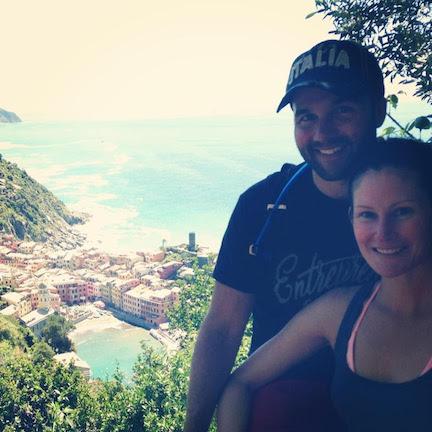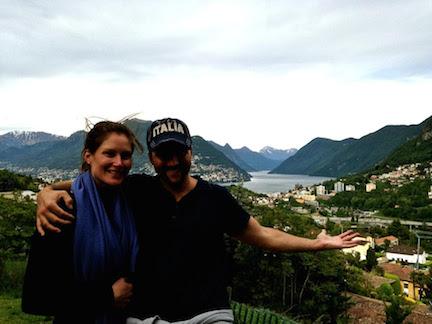
Creating systems that create freedom
In May of 2014, two years after John had his AH-HA moment for EntrepreneurOnFire, and one year after I joined the team, we took our first fully unplugged vacation since creating our business.
Many entrepreneurs don’t believe they have the time to take a vacation. They say things like:
“There’s way too much for me to be doing right now – there’s just no way!” Or,
“Are you kidding me? My business would come to a screeching halt if I left!“
But being free is one of the biggest draws to becoming an entrepreneur, right? Being free to leave for two weeks on a vacation; free to be able to attend your son’s soccer game on a Tuesday afternoon at 1pm; free to take your family to Disneyland on a Thursday. So why would you take that away from yourself?
No one said it was easy, but it’s definitely possible.
It takes a lot of planning
It takes a lot of planning, and creating systems for your business and having a team in place who can help is integral.
Our decision to go 100% unplugged for two weeks was based on our complete trust in the systems we’ve created and in the abilities and training we’ve passed on to our two virtual assistants, JM and Jess.
I’m going to break down the 5 step process we use for creating systems in our business, and I’m also going to give you an example within each step of something we were able to automate that helped us fully unplug during our vacation.
A sneak peek!
But first, we want to share a glimpse of our first vacation since creating EntrepreneurOnFire with you!
During our 2-week trek around Europe we were able to hit 5 countries in 14 days with just ourselves and our backpacks. Pretty incredible, right?
It was.
We learned about the history in each place we visited, walked through castles and cathedrals that took our breath away – we even got to meet up with some incredible entrepreneurs along the way, like Jason Van Orden of Internet Business Mastery (he actually took the photo of us in Paris that you see below!)
And every single thing we experienced, we experienced for the very first time.
Paris
In Paris, it was visiting the Louvre, making it all the way to the top of the Eiffel Tower, and gazing across the Paris skyline from the steps of Sacré-Coeur.

Barcelona
In Barcelona, it was down the cobble stoned streets of the Old Gothic Quarter (Barri Gotic) that we laid eyes on Roman ruins and choked on our hearts as we entered Gaudi’s masterpiece that dwarfs us here: Sagrada Família.

Cinque Terre

Lugano

Prague

Unplugging from our business
Another first for both of us?…
Throughout our time away, we remained unplugged – completely removed from our business – thanks to two things:
1. The systems we’ve created for our business, and
2. The help of our virtual team.
Understanding your business well enough to be able to create systems is only the beginning. Knowing the right types of systems to use, and how to utilize them best to obtain the results you really want takes time, effort, focus and drive.
But it’s well worth it, because systems will change your business – and the amount of freedom you have to do the things you love that are outside of your business – and we can promise that.
To help you in creating systems for your own business, I’ve laid out the 5 steps we take when creating systems for our business, along with an example of each below.
5 steps to creating systems that create freedom
1. Take inventory
Identify what types of actions you take regularly that help drive your business.
For us, a major example of this is the podcast. Without the podcast, a huge chunk of our business would be gone.
A smaller example, but still a very important one, is our weekly email newsletter. Without our newsletter, we would lose a major touchpoint with our audience.
2. Create a process
Next, create a process for each of those actions: what needs to happen from step 1 to step done for each action to occur successfully?
Don’t just say it in your head, or out loud to yourself – actually write it down. What does it look like? This step includes preparing for any follow-up actions, or alternate reactions that might be triggered from the original action.
For the podcast, the process looks something like this:
- Record
- Edit
- Tag
- Upload
- Schedule
- Promote
For our email newsletter, the process looks something like this:
- Brainstorm
- Strategize (How does this fit in with our other content?, and What is our goal?)
- Write
- Edit
- Schedule
Follow-up actions for both of these processes might include things like:
- Ongoing engagement: responding to comments on your Facebook post that is promoting your podcast; or
- Compiling feedback/stats: if you asked a question in your newsletter, or included a quiz of some sort for your audience to take, then you need to be monitoring that so you can actually utilize that feedback or those stats.
3. Brainstorm ways this process can become either a) automated, or b) most efficient
What types of tools, resources or help do you need in order to make the process you’ve just created become either fully automated, or at the very least, the most efficient?
For example, is there any software you can use in order to automate parts of the process? Or, are there any steps in the process you can delegate to a team member or “batch” in order to see multiple outputs instead of just one?
For the podcast, John batches his episodes. Instead of recording 1 episode every single day and then publishing it, he records 8 episodes every Monday, and then he does an upload and scheduling of 30 of those episodes once per month. That means instead of working on recording 30 days a month, he’s only working on recording 5 days a month.
We’ve also created tasks for our virtual team so that any type of promotion on social media is prepared and scheduled out in advance by them.
4. Implement
Try it out!
Ask yourself during this step what’s working and what’s not. Don’t just think about these things, but actually write them down so you can think of ways to alter them later.
John didn’t launch the podcast and think on day 1 that batching was exactly what he should do. There was a period of time where he was doing interviews throughout the week, and he didn’t have the most efficient system in place. For example, ScheduleOnce is an automated scheduling tool he found months after his launch, which has saved him multiple hours – no doubt – on the scheduling front.
It took him learning over time and looking back at what was working and what wasn’t to realize that the batching routine and automated scheduling worked best.
5. Continuously improve
Systems are wonderful because once you set them up, they’ll continue to work for you. But that doesn’t mean they will stay flawless.
Continue to revisit your systems – especially those you’re able to fully automate since you’ll be paying less attention to them over time. These types of systems might include tasks that you’ve delegated to someone else, or tasks that you have set up in a program like If This Then That (IFTTT).
Checking up on these types of systems every once in a while will ensure that any upgrades, updates or changes you make in your business will be taken into consideration.
Creating systems for your business takes time, and building a team who you can rely on doesn’t happen overnight either. But investing time in creating systems and a team who can help will change your business, and it’s the only thing that will afford you the freedom to unplug for two weeks, go to your son’s soccer game, or take your family out for the entire day – even if it is a Thursday.
Do you have a question about how systems can help you and your business, or even about the process of actually setting them up? Let us know in the comments section below!
